Butterflies and moths go through a complex series of changes during the life cycle, a process called complete metamorphosis.
Let’s explore the life cycle of the queen butterfly first, moth second, and then suggestions for activities at the bottom.
The queen butterfly starts out life as an egg laid by the female butterfly on a milkweed plant.
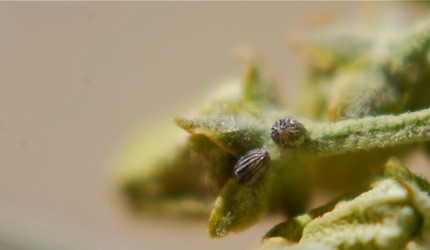
The eggs usually start out white, but darken as they get close to hatching.
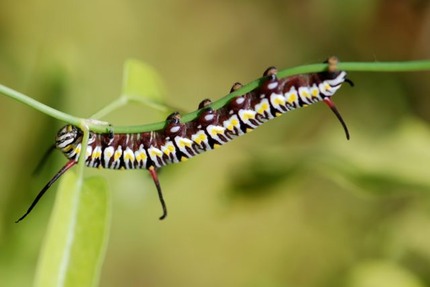
A larva, or caterpillar when we're studying butterflies and moths, emerges from the egg, and begins to feed on the plant.
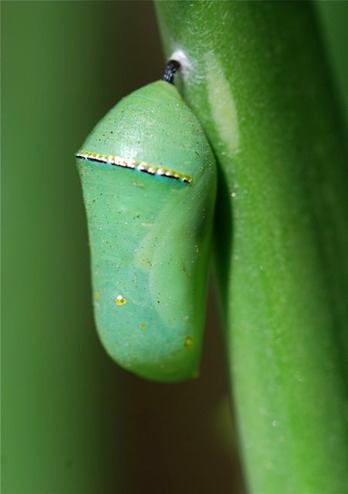
When it has reached its full size, the caterpillar transforms into a pupa, called a chrysalis or chrysalid for butterflies.

After a week or so, the chrysalid begins to turn black and you can see parts of the developing butterfly inside.
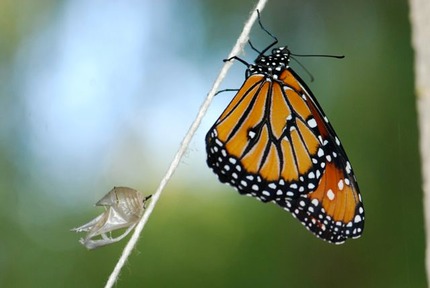
A few more day, and out comes the adult butterfly!

The adult females mate with males like this one.
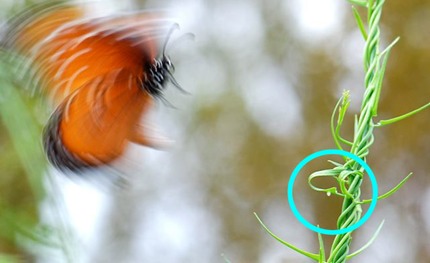
The female butterflies then lay eggs on host plants, like this vining milkweed. Can you see the white egg she just laid?
As we talked about on the butterfly and moth identification page, the main difference between moths and butterflies is that moth caterpillars often make a silk bag around themselves, called a cocoon, before pupating.
Silkworm Moth Life Cycle

Silkworms lay their eggs on egg cartons or paper towels.
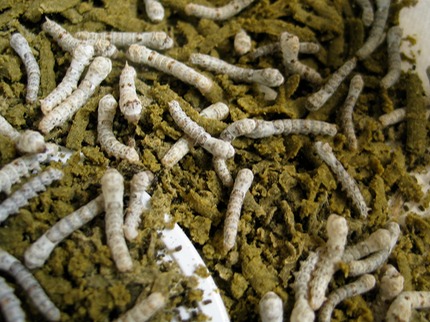
The eggs hatch into tiny caterpillars. These silkworm caterpillars are eating an artificial diet that is kind of like a stiff pudding.
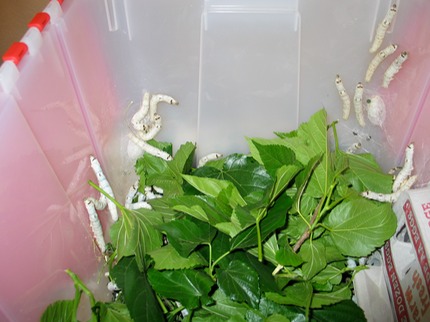
Silkworm caterpillars may also eat the leaves from mulberry trees. Either way, they grow and grow, shedding their skin or molting several times.
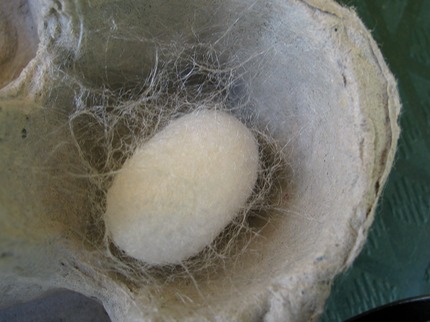
When the caterpillar is ready to pupate, it spins a cocoon. This one chose to spin in an egg carton.
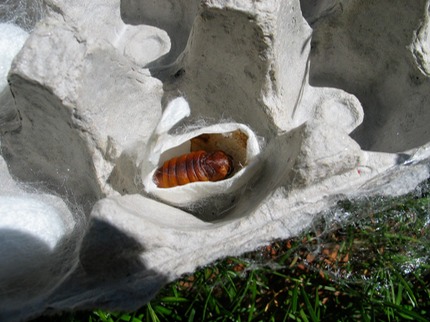
Inside the cocoon, the pupa forms (it didn't hurt the pupa for us to cut open a flap of its cocoon).
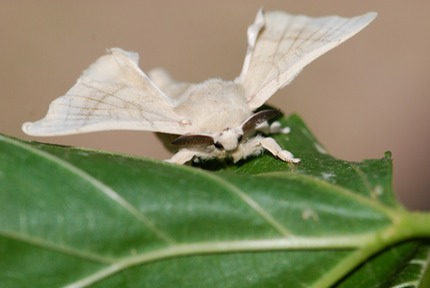
The moth emerges from the pupa within the cocoon first. Then it spits an special chemical on the cocoon and a hole dissolves in one end. The silkworm moth can then wiggle its way through the hole and escape.
Activity 1. Create a poster of a butterfly or moth life cycle
Gather:
Art supplies, such as
- Poster board, construction or craft paper
- Crayons, markers and or colored pencils
- Yarn, scissors
- Glue, tape
- Photographs or clip art of caterpillars, butterflies and moths
Plan where each stage should go in the cycle: egg, caterpillar (larva), chrysalis or cocoon, and adult butterfly or moth. Leave room for a title at the top. Draw arrows between the stages or connect them with yarn.
For a shortcut, Arizona State University's Ask-a-Biologist has a manduca moth life cycle coloring page (.pdf direct link) and a monarch butterfly life cycle coloring page (.pdf direct link)
Activity 2. Raise a butterfly or moth
At some point in their childhood, most budding scientists raise a caterpillar to find out what it turns out to be. Suggestions:
- You might want to start with silkworms, which can be raised on an artificial diet or mulberry leaves.
- Get all the information you need to raise Manduca sexta moths at the Manduca Project or grow a virtual caterpillar at the Arizona State University's Ask-a-Biologist Manduca Growth Experiment
- Learn the ins and outs of raising caterpillars.
- Be nice to the environment and never release captive or farm bred insects to the wild.


